There is less discussion of grip variations than there should be. People start off with different exercises to target specific muscles, how many reps and sets, and whatnots. However, when achieving your fitness goals in the gym, knowing different grip variations is important.
Hand grip positions are as critical as intensity and volume during a workout. You must continually tweak these positions if you want to maximise outcomes and show improvement.
So, what are different grip variations and how can they benefit your fitness goals?
Pronated (Overhand) Grip
A pronated grip, also known as the overhand grip, is a type of grip position where the palm is facing down and away from the body. As a result of the forearm’s rotation, your biceps are placed in an unfavourable position, causing this grip often your weakest. However, the overhand grip targets the muscles of the back–activates lats and trapezius muscles.
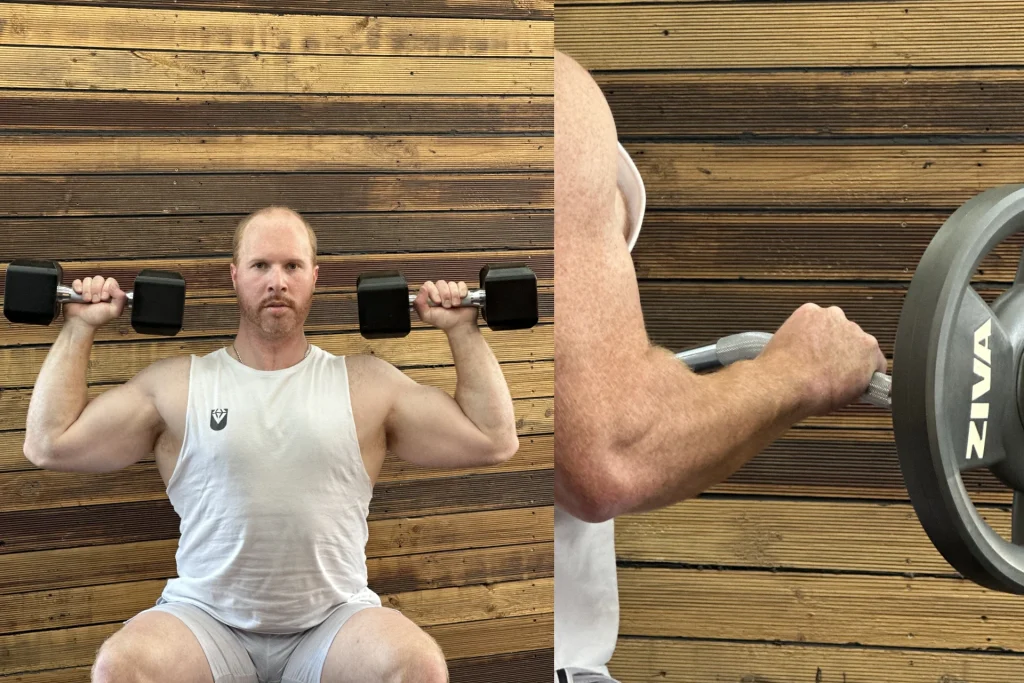
With that being said, this type of grip has many benefits. This is because of how much resistance it may produce. When compared to other grip types, the hand positioning or grip requires higher muscular usage during lifts.
When to use the overhand grip:
- Bench press
- Shoulder press
- Dumbbell squats
- Inverted row
- Dead hang
- Deadlift
- Pull-up
- Lat pulldown
- Reverse grip bicep curls
- Reverse grip preacher Curls
- Tricep curls
- Back squats
- Overhead press
- Clean and jerk
- Overhand triceps pushdown
- EZ bar skullcrusher
Supinated (Underhand) Grip
Compared to the overhand grip, the supinated or the underhand grip can handle more load. With this grip, your palms are facing up, making this type of grip your second strongest position and activates your biceps.
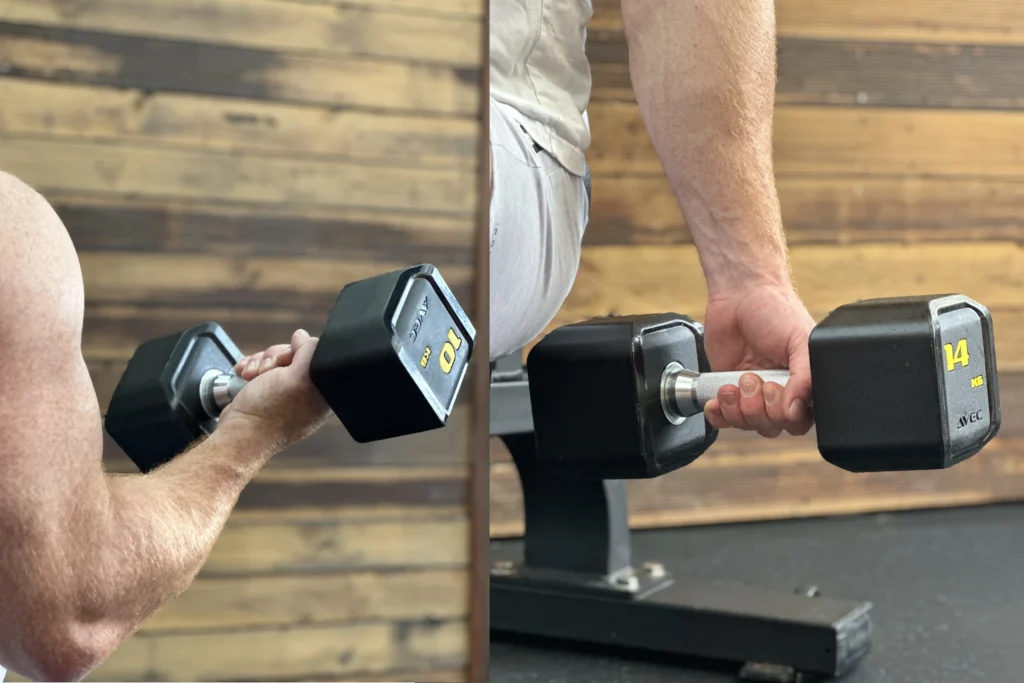
If you use the underhand grip, you will activate different muscles to work and tolerate more weight and resistance. While you can use the overhand grip for bicep curls, maximising underhand grip emphasises the biceps, rather than the forearm muscle.
When to use the underhand grip:
- Bicep curls
- Tricep curls
- Reverse grip inverted row
- Chin-up
- Front squats
- Reverse grip barbell row
- Reverse grip lat pulldown
- Preacher curl
- Reverse grip triceps pushdown
Neutral Grip
With the neutral grip, both of your palms should be facing each other. Using the neutral or narrow grip, you allow your elbows closer to the core, which makes movement more effective. Plus, it also reduces the stress on your wrists and shoulders.
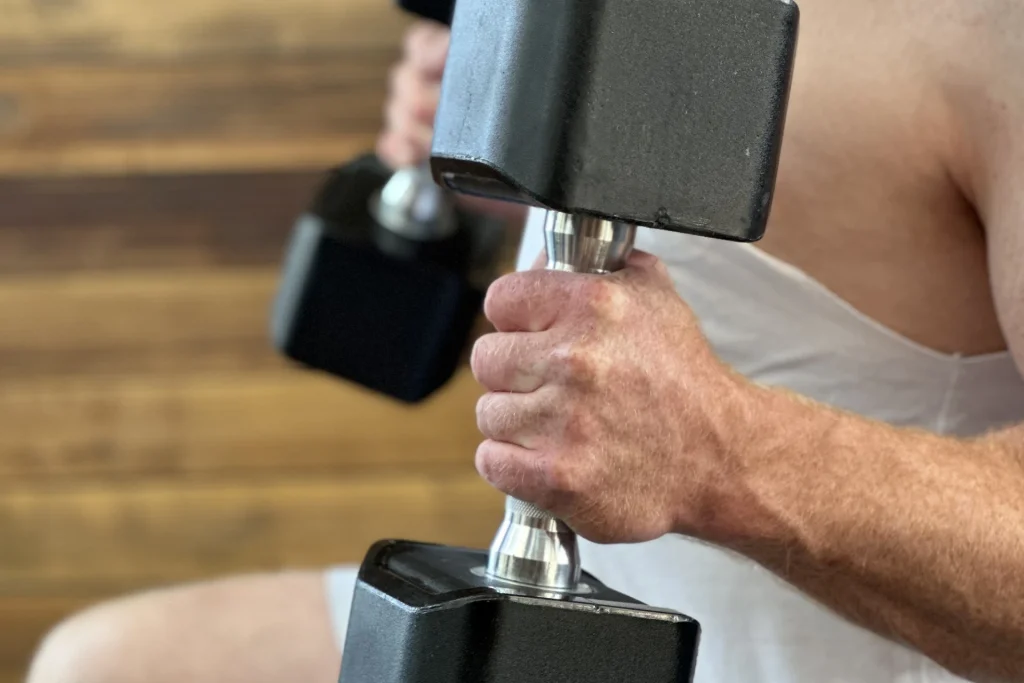
For example, when doing presses with a neutral grip on an incline bench, you are activating the upper pectoral muscles and increasing the range of motion at your elbow joints. I suggest you try it as an alternative to the neutral grip dumbbell press if you have access to a cable setup. Exercises like cable crossovers are excellent for concentrating tension in the inner chest.
Here’s some other exercises you can do with a neutral grip:
- Trap bar deadlift
- Swiss bar bench press
- Swiss bar row
- Swiss bar overhead press
- Neutral grip dumbbell press
- Renegade row
- Hammer curl
- Triceps pushdown
Mixed Grip
You may use the mixed grip by mixing the pronated and supinated grips. Weightlifters frequently employ a mixed grip when doing the conventional barbell deadlift or the sumo deadlift. However, overusing the mixed grip imbalances the muscle activation, can cause asymmetries, can lead to a rounded back, and can cause bicep tears.
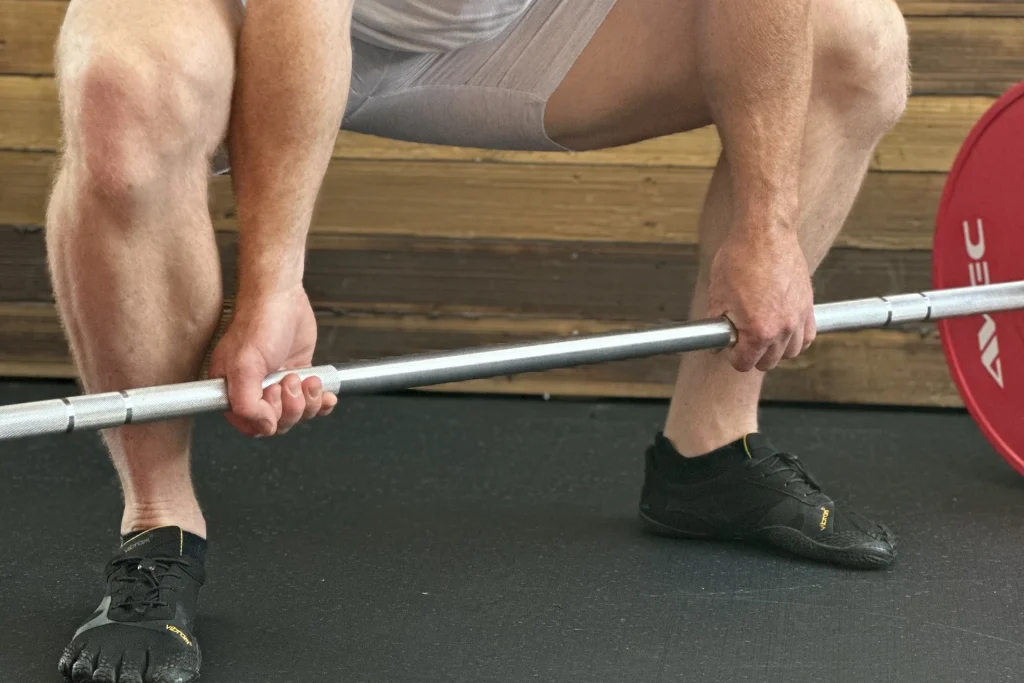
That is why it’s important to use the mixed grip when going for higher volume in weights. But if you’re just learning how to deadlift, might as well stick to the overhand grip.
Hook Grip
With the hook grip, lifters must tuck the thumb between the first and second fingers when holding the barbell overhand. The thumb must be wrapped around the bar first, so be careful to do that. Afterwards, the additional fingers will wrap on top of the thumb to further secure the grasp.
The hook grip is common to Olympic weightlifters; lifting straps are not allowed during weightlifting competitions. This type of grip offers a secure and strong grip that is less likely to slip, promotes better bar control, and reduces forearm fatigue and tightness.
Suicide Grip
From its word, the suicide grip is a thumbless pronated grip while you are bench pressing. When benching, you usually wrap your thumb around the bar. The bar will rest higher in your hand in this position, slightly repositioning your wrist. Finding a stable wrist neutral posture and the ideal pressing angle will require some struggle.
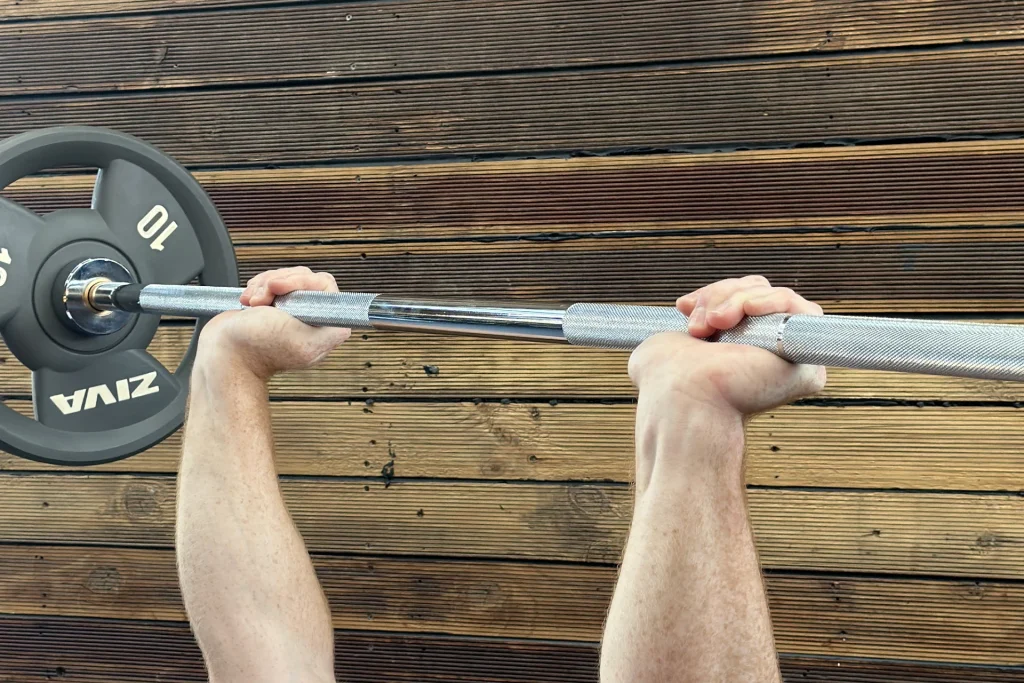
Though it may increase your risk of injury–the bar or dumbbell falling on your face–-some argue that it allows comfort on the wrists, better shoulder position, and more triceps activation. Which is why you should only execute the suicide grip when you have an attentive spotter, have a chalk or wrist straps, and squeeze the bar as much as possible.
When to use suicide grip:
- Low bar back squat
- Overhead shoulder press
- Seated chest press
- Pull-ups
- Conventional bench press
- Close grip bench press
- Machine chest press
- Cable chest flyes
- Pec dec machine
Knowing the Right Grip
Choose the grip that makes the most sense to you. You have a number of options to pick from for numerous workouts. Your training programme now has additional alternatives, thanks to the article. You can effectively change up the workout by merely changing the grip. Try them out and see which one feels the best.

